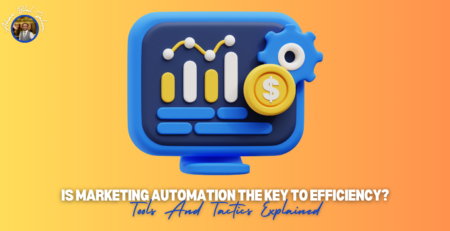Can Chatbots Really Replace Human Customer Support?
In the rapidly evolving digital landscape, businesses are constantly seeking ways to enhance customer experience while maintaining operational efficiency. One of the most prominent developments in this area has been the rise of chatbots. These AI-powered assistants are now handling millions of customer interactions across websites, apps, and social media platforms. But the pressing question remains: Can Chatbots Really Replace Human Customer Support in a way that maintains quality and satisfaction? Let’s dive into both the potential and the limitations of chatbots to find out whether they are ready to fully take over the role of human agents.
The Rise of Chatbots in Customer Service
Chatbots have gained immense popularity for their speed, availability, and cost-effectiveness. Unlike human agents, they can operate 24/7 without breaks, making them ideal for providing round-the-clock support. Simple tasks like answering FAQs, booking appointments, tracking orders, and providing account information can all be automated through chatbots.
Companies like Amazon, H&M, and Spotify have successfully integrated chatbots into their customer service systems. These bots can handle thousands of queries simultaneously, significantly reducing wait times and improving response efficiency. The growing reliance on chatbots has led some to believe that human customer service might soon be obsolete.
Where Chatbots Excel
There are several areas where chatbots shine:
- Speed and Scalability: Chatbots can handle a large number of customer inquiries simultaneously, something that would require an army of human agents to achieve. This scalability is invaluable during peak hours, holiday seasons, or major product launches.
- Consistency in Responses: Unlike human agents who may vary in tone, accuracy, or performance, chatbots deliver consistent and error-free answers (as long as they are programmed correctly). This helps ensure that customers receive uniform service regardless of when or where they reach out.
- Cost Reduction: Automating basic customer interactions significantly reduces operational costs. A single chatbot can do the work of several human agents without the added expenses of training, salaries, or benefits.
- Data Handling and Integration: Chatbots can instantly retrieve data from CRM systems, making the customer experience smoother and faster. They can also collect and analyze data in real-time to provide insights for future improvements.
The Limitations of Chatbots
Despite their many advantages, chatbots still face several limitations that prevent them from fully replacing human support.
- Lack of Emotional Intelligence: One of the biggest drawbacks of chatbots is their inability to empathize. While they can simulate friendliness, they don’t truly understand emotions. In situations where a customer is frustrated, angry, or confused, a human touch often makes a huge difference in de-escalating the situation and providing reassurance.
- Handling Complex Queries: Chatbots excel at dealing with straightforward, scripted issues. However, when faced with complex or unusual problems, they often fall short. Customers may become even more frustrated if they find themselves stuck in an endless loop of irrelevant responses.
- Limited Personalization: While chatbots can use data to tailor responses, they still operate within programmed limits. They may not be able to understand unique preferences, humor, sarcasm, or cultural nuances the way a human can.
- Technical Glitches and Misunderstandings: Chatbots can misinterpret user input, especially when faced with typos, slang, or non-standard phrasing. When this happens, the conversation can quickly derail, leading to a poor customer experience.
A Hybrid Approach: The Best of Both Worlds
Instead of trying to completely replace humans, many companies are now adopting a hybrid model that blends chatbots with live agents. In this system, chatbots handle the initial interaction and resolve simple issues. If the problem requires deeper assistance, the chatbot smoothly hands the conversation over to a human.
This not only ensures efficiency and speed but also provides a safety net for those moments when empathy, critical thinking, or creativity is needed. Additionally, human agents can use chatbot data and analytics to personalize their responses and deliver even better service.
Customer Expectations Still Lean Toward Human Support
Surveys consistently show that while customers appreciate quick answers, many still prefer human interaction—especially when dealing with complex or sensitive issues. According to a study by PwC, 59% of consumers feel companies have lost touch with the human element of customer experience. This suggests that even the best chatbots cannot yet replace the value of a genuine human conversation.
The Future of Chatbots in Customer Support
With advancements in natural language processing (NLP), machine learning, and sentiment analysis, chatbots are getting smarter and more human-like. Future iterations may be able to detect emotional tone, learn from past interactions, and handle more nuanced conversations. However, we’re not quite there yet.
Instead of focusing on replacement, the more realistic goal for businesses should be enhancement. Chatbots can significantly enhance the capabilities of human agents, allowing them to focus on more critical and meaningful tasks. In turn, this can lead to a more efficient and satisfying customer service experience.
Conclusion
So, can chatbots really replace human customer support? The answer is: not entirely—at least not yet. While chatbots offer undeniable advantages in speed, cost, and efficiency, they lack the emotional intelligence and flexibility that human agents bring to the table. The most effective strategy for now and the near future is a hybrid model where chatbots and humans work together to deliver a seamless and empathetic customer experience. Businesses that strike the right balance between automation and human connection will be the ones that thrive in the digital age.










